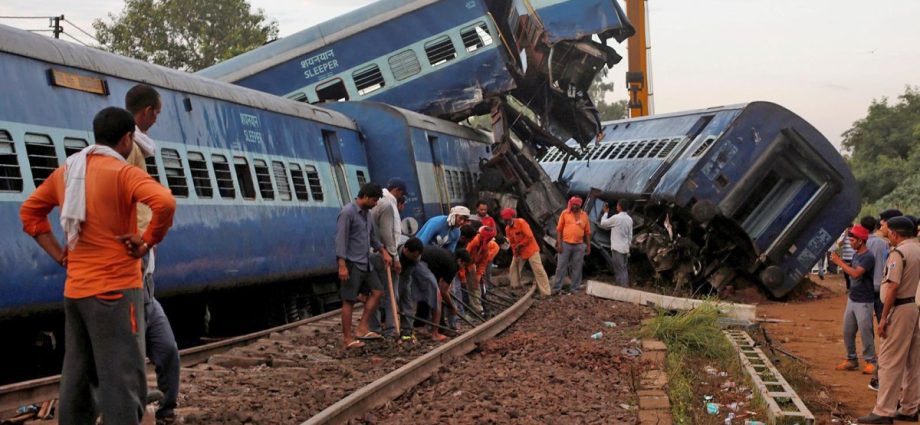
Indian Railways carries more than 23 million passengers daily, many of whom are poor migrant workers. Because of the present government’s underinvestment on safety components, common people are losing trust in this mode of transportation.
A rail safety fund was introduced in 2017-18, but money allocated for track renewal was reportedly not effectively utilized. Spending on programs dedicated to safety improvements for India’s fleet of more than 13,000 older trains has been shrinking.
Railway tracks have suffered from years of lack of maintenance and are not built to accommodate the stress of fast-moving trains that now ply the country. Moreover, political hype has overtaken fact and reality.
The seriousness of the safety issue in Indian Railways came to the fore after the recent deadly train accident in Odisha, where 292 passengers died and 1,100 were badly injured.
The government of India’s National Crime Records Bureau (NCRB) finds that roughly 260,000 people have lost their lives in train accidents in the past 10 years, and a vast majority of these deaths were caused by people either falling off trains or getting run over by them.
As well, in the last four years, more than 120,000 cattle have fallen prey to train accidents. These cattle are the key sources of income for poor people.
India’s top audit body, the Comptroller and Auditor General (CAG), in its 2022 annual report on “Derailments in Indian Railways” held the engineering department of Indian Railways responsible for the majority of derailments.
The CAG report from last year revealed three issues pertinent to track maintenance:
- Reduction of funding for track maintenance over the past few years.
- Funds allocated for track maintenance were reappropriated to other projects.
- In some cases, funds were underutilized – as much as 25% of allocated funds were returned (a sign of bureaucratic hurdles).
The CAG report also flagged severe shortfalls in inspections, failure to submit or accept inquiry reports after accidents, not utilizing a dedicated railway fund on priority tasks, declining trend in funding track renewal, and inadequate staffing in safety operations as serious concerns.
The official data reveal staggering understaffing, which is putting stress on the system and its current employees. Indian Railways is reeling under a crushing staff shortage, with 312,000 non-gazetted posts lying vacant across the country, as reported by Railway Minister Ashwini Vaishnaw in Parliament last year.
In the Central Railway, of the 28,650 vacant posts, almost 50% (14,203) are in the safety category that primarily includes operating and maintenance staff, such as inspectors of various kinds, drivers, train examiners and shunters, among several others.
The report further said fire extinguishers had not been provided in 27,763 coaches (62%) in violation of extant norms. This is evidence of terrible management, which is costing many valuable lives and livelihoods.
Despite knowing that 99% of rail travelers hail from poor and middle-income backgrounds, tens of millions have been generated by the railway from the cancellations of tickets. This cancellation fee is an additional burden on common people, particularly poor migrant workers, for whom the train is the lifeline for their daily commute to earn bread for their families.
The government must re-examine its current policy of neglect of the railway network, and must prioritize its investment in railway infrastructure and ensure that the safety of passengers is the topmost priority.
As the railway network is the lifeline of the vast majority of poor people in the country, the government must come forward with a plan to provide free travel to the poor. Moreover, the government must consider a full-time dedicated railway minister to manage the world’s second-largest railway network efficiently.

